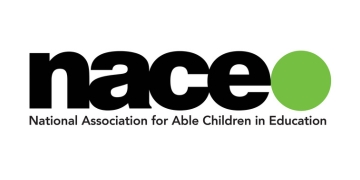Colleges and providers need to get smarter in attracting new learners who’ve just had their GCSE results – here’s how to do it, says Lucy Perkins
Students’ decisions on their future are being made increasingly last-minute: last year, a record one in eight university students found their place through clearing.
In today’s rapidly evolving post-16 learning sector, it is not just universities that can capture these thousands of young minds. With tuition fees on one side, and increased investment in apprenticeships and technical and professional education on the other, FE has a golden opportunity to tell its story at this time of year.
Colleges and centres need to compete not only with universities but also to position vocational courses as an attractive alternative to sixth forms and A-levels. As this competition intensifies within the FE landscape, the digital space is where recruitment campaigns will be won and lost.
The business case for implementing a relevant, engaging digital recruitment campaign is clear: in many instances, learners clearly prefer to wait until receiving their results before making a decision so as to minimise uncertainty or administration.
Recent research undertaken with GCSE students about how they make decisions on their next steps delivered conclusive results on the influence of media outlets. Here are the main findings:
- Traditional media such as local newspapers and TV fail to engage learners, and in most cases do not succeed in actually reaching them at all, although they remain vital channels for engaging with other stakeholders such as parents and employers.
- YouTube, Snapchat and Instagram were revealed as the prime sources of information. This finding is not particularly surprising, yet many FE colleges do not appear to be keeping pace with this uptake of new channels.
FE colleges must ensure their approach to digital is underpinned with an intelligent strategy if they are to be successful. Here are some steps colleges and providers can take:
Use the right channels
Interestingly, while many colleges have succeeded in the past decade in engaging young people via digital, not one of the GCSE cohort interviewed in the 2017 research even had a Twitter profile. It is essential to connect with them via the channels they operate on.
Design bespoke campaigns – don’t repackage
Visual media are currently dominating, and content has to be something learners will want to share or mention to their friends. Repackaging a social media advert by simply applying an Instagram filter will not suffice; young learners will not be convinced. The way services are offered must be transformed and made to feel authentic to each social media channel. This year, for example, one university is offering clearing places through Snapchat.
Make it hassle-free
The key to any form of digital recruitment is making it frictionless. Today’s learners have grown up in a world where transactions are made very quickly online, and they want the same experience in education. It is quite right to think of students as customers – and just like in any transaction, learners will take their custom elsewhere if frustrated by a time-consuming, non-user-friendly process. Once the decision has been made, they expect enrolment to be fast.
Personalise the marketing
In contrast to this quick end-goal, FE colleges should ensure their websites are “sticky” (the industry term used to describe how long the average user stays on the site), and ensure they attract the right audience. Ultra-personalisation technology now makes it easier to target people in one geographical location, enabling colleges to more successfully send a message directly to learners within their catchment area, and subsequently generate traffic to their site.
Personalise the online experience
In terms of retaining this attention, colleges should incorporate features that are much more engaging. For example, allowing learners to input their personal interests and strengths to produce course matches, rather than simply searching by course name. Likewise, a site that can create a user journey by showcasing not just course details, but where it can lead them, can instil a sense of aspiration.
Put simply, FE colleges should be taking digital extremely seriously as a means of recruitment if they are to continue to compete for new learners. Results season presents the biggest opportunity to interact with and engage prospective students who will be making quick decisions on their future. This opportunity can only be capitalised on if done rapidly and effectively.
Lucy Perkins is CEO of Lda, a digital agency in MediaCityUK that specialises in strategy, content, creative and tech for clients across the FE sector.







Your thoughts